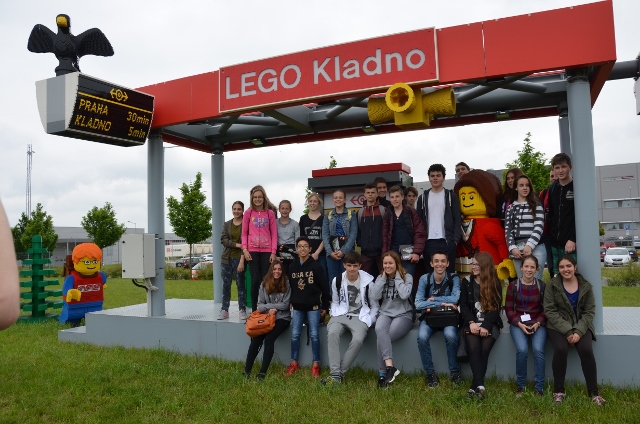- Visit to a waste treatment plant Orly Staw, Kalisz
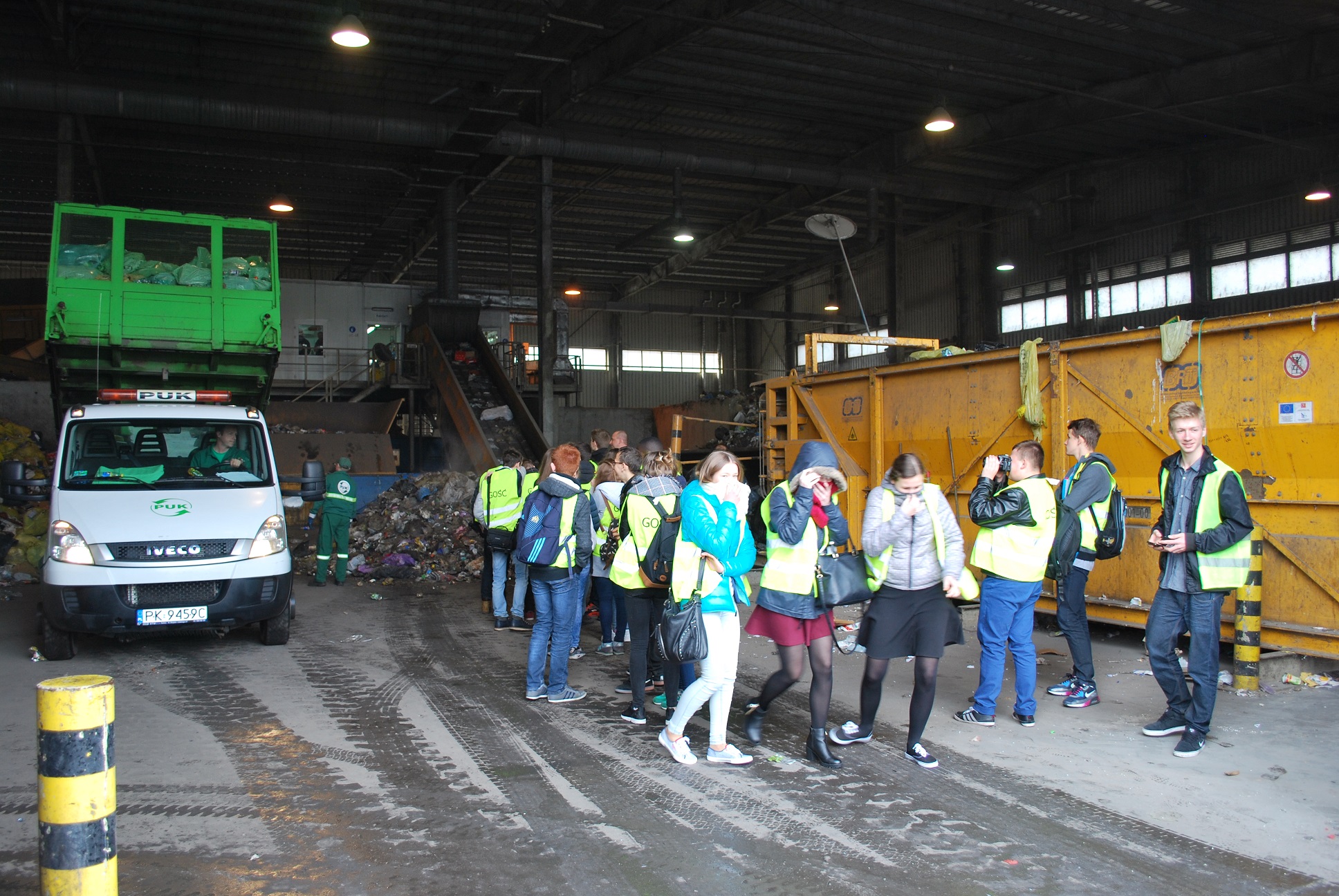
During a two-hour trip around the plant, the students had an opportunity to get acquainted with different types of waste, its management and collection, and with the use of modern technology in the process of its utilization and recycling. While visiting a so-called ‘educational path’, the students learned about the consequences of improper handling of:
- Electronic waste
- Glass
- Paper
- Metal and plastic
- Batteries
- Dangerous toxic waste
- Bio-waste
Along the ‘educational path’ there was a stand of a renewable energy laboratory, a post at which participants learn how to segregate waste and garbage in a practical way, and finally a composter.
Outcomes: Goal of the activity is comparing the social and economic approach towards the management of waste issue in all involved countries and becoming acquainted with modern technology used in the process of utilization.
- Visit to a municipal water and sewage company
The visit to Municipal Water and Sewage in Kalisz was an extremely interesting experience which raised all participants’ ecological awareness.
We visited:
- Intake stations
- Water purification plant
- Laboratories
During the trip we learnt about:
- The manufacture of water for the city
- The ways of water supply
- The ways of water protection
- Drinking water treatment (for example ultraviolet) and analysis (muscles and then chemical and physics laboratories)
- The changes in the tendencies of using water in annual and long - term cycles
- The ways of saving water
- The social and economic approach towards the waste management
Becoming acquainted with modern technology used in the process of utilization. The visit is closely related to the tasks that students will be obliged to conduct later, namely on the basis of data collected in Poland, students will be responsible for calculating the data and providing the positive outcomes of such behavior with the help of the teachers that were present at the company.
Outcomes:
- Lecture about waste segregation of waste, ecology and importance of recycling
- Visit to the Parc de Recerca Biomedica de Barcelona (PRBB) and Centre for research in Environmental Epidemiology (CREAL)
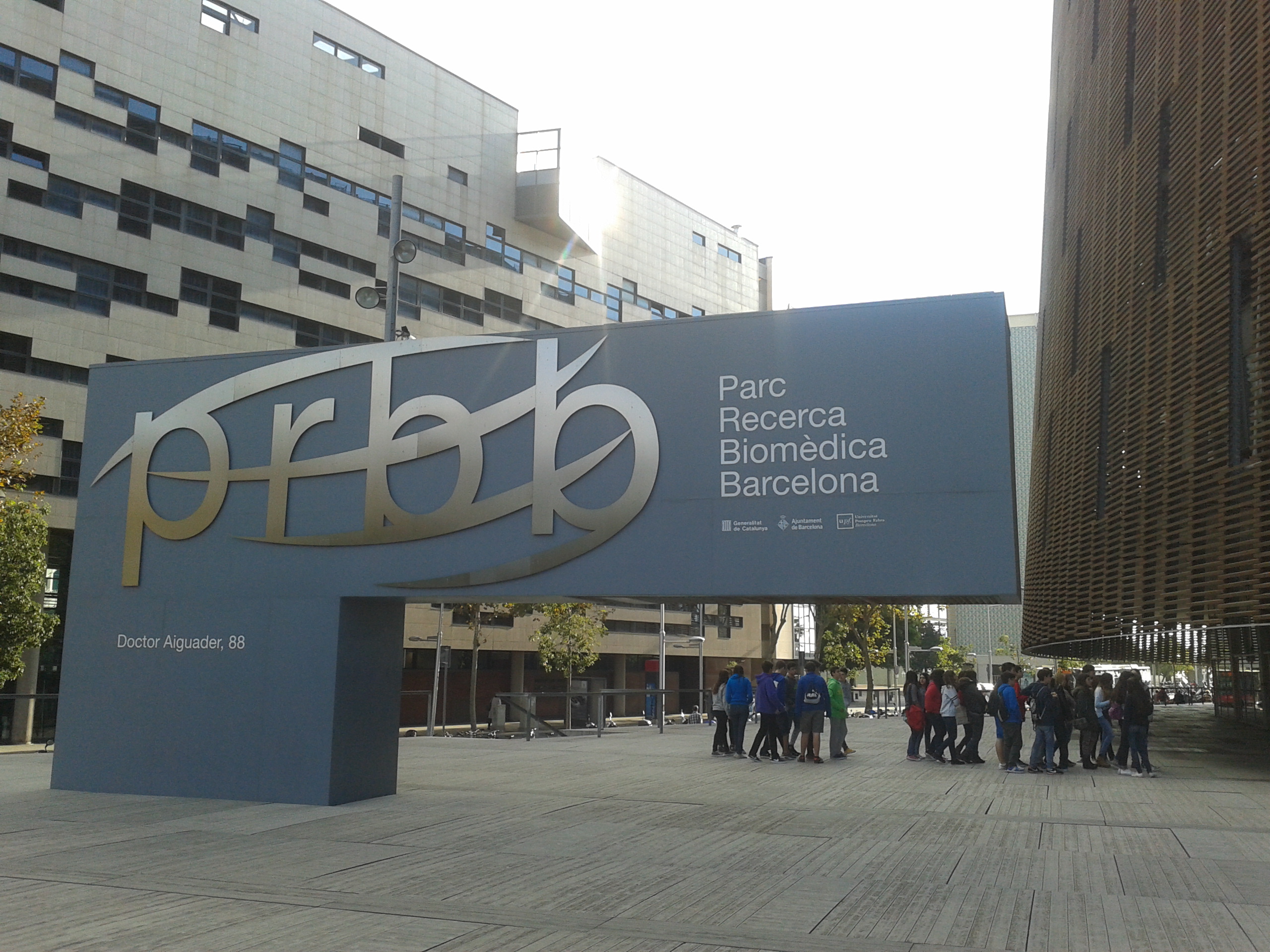
During the meeting in Barcelona our host organised visits to places that are connected with aims of our projects: Barcelona Biomedical Research Park, a place where science and diversity are connected in a unique creative space, CREAL, Centre for Research in Environmental Epidemiology, a centre that conducts epidemiological researches on environment and health. We attended a lecture on health factors and we were told about their projects and research and had the opportunity to ask questions on the subject. Lecture was extremely important and strongly connected to our measurement and we were so lucky to attend this and managed to exchange contacts with the researchers in order for them to help us if needed to interpret our measurements.
The visit to CREAL was an extremely interesting experience which raised all participants’ awareness about pollutions and its consequences.
In this Center, hundreds of researcher students, statisticians, computer scientists of all over the world are working together, conducting experiences, analyzing and publishing results.
CREAL is associated to a hospital which permitted to combine analysis about diseases and their origins and evaluate if there is a link between diseases (cancer, breathing diseases, asthma, allergies…) and pollutions.
During the visit the teachers learnt about:
- Pollution (light, sound, air, water, electromagnetic), links between them, where there are the worst. For example, air pollution in some districts of Barcelona (white filter to test it and compare) is very important (the filter carried in a backpack gets black very quickly)
- Protection
- Experiences led: For example, test about effects of electromagnetic waves of cells phone on head. Trying to compare the use of cell phone on ear near head or used only for SMS (cell phone with captors given to teenagers) and then if the sample of teenagers develop cancer or trouble linked with their use of phone but it’s difficult to measure and to know if it’s dangerous or not and how much.
- Technology used to measure and test pollution and effects on health: statisticians and computer scientists worked on the results of experiences
- The social and economic approach: sponsors who pay to prove their technology is harmfulness.
Becoming acquainted with modern technology used in the process of utilization, the visit is closely related to the searches that students have done about pollutions and its effects on health.
Outcomes: - Important lecture about pollutants we are about to measure in our project
- Contacts with researchers that can help our project
- Visit to the solar power plant Crucey-Villages, France
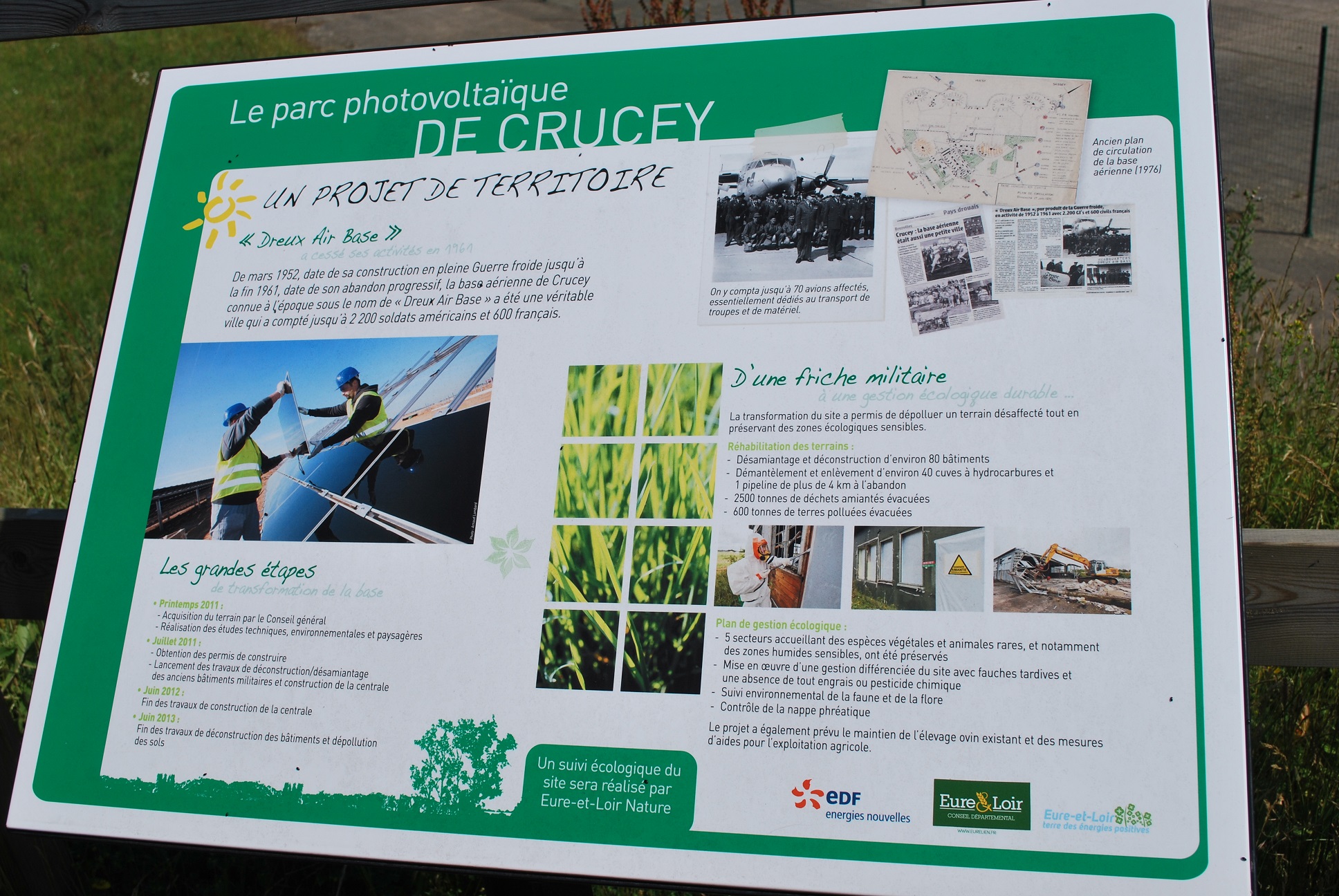
Built in 2012, the solar park in Crucey-Villages is the biggest in Europe with its 244, 5 hectares covered by 750 000 photovoltaic panels. We were given a lecture by an engineer specialized in solar energy. He told us the difference between solar calorific energy and solar photovoltaic energy. He underlined the efficiency of the component used here (Cadmium tellurium) allowing a production of 100W/m2. However, he pointed out the negative impact of such a product on the ecosystem and then showed us all what has been developed to protect the environment (either animals or vegetables). When we visited the park, teachers realized the scale of this project.
- Visit to the Lolita Lempicka factory
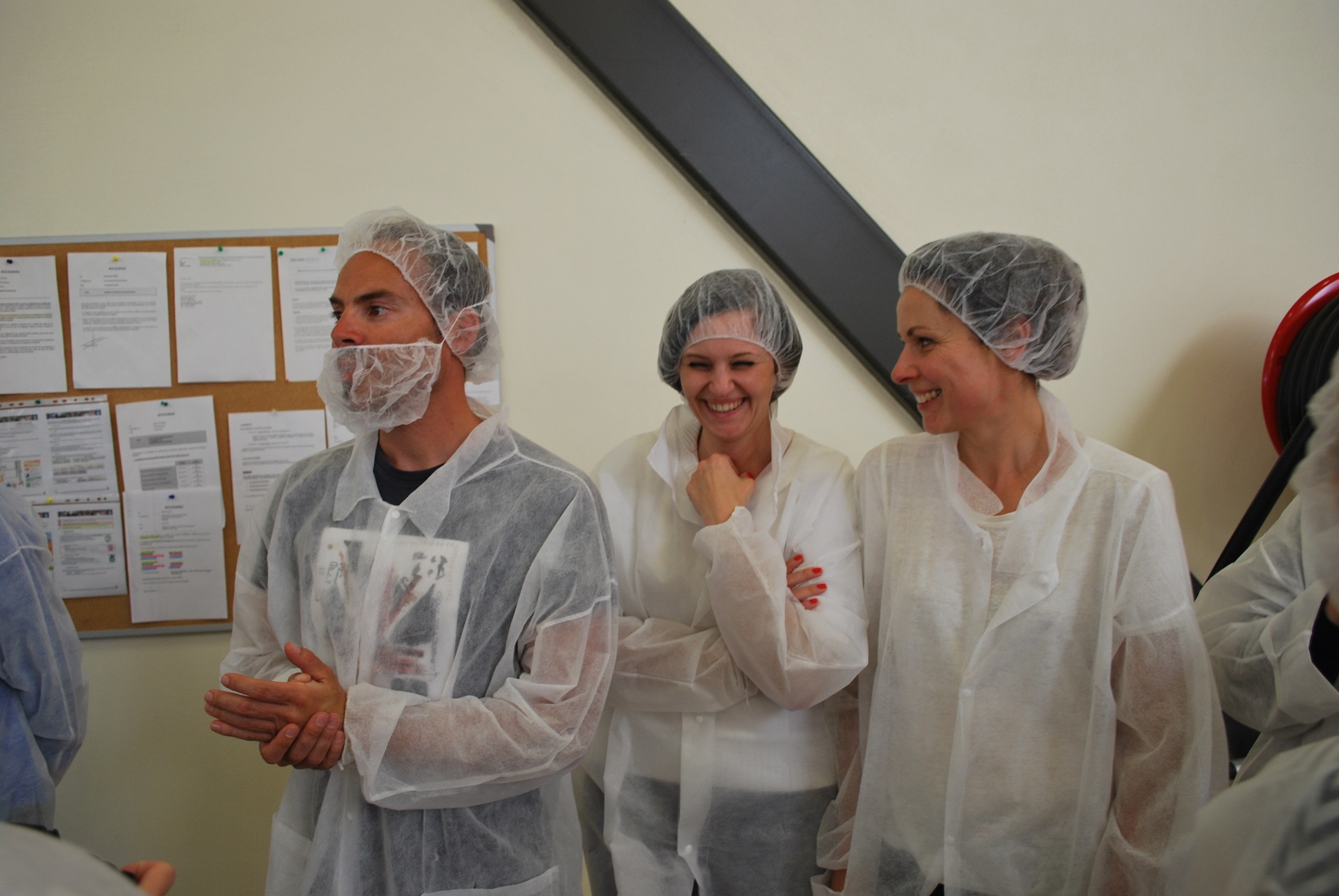
- Visit to The Centre of Environmental Studies (there we will attend a workshop about recycling plastic bottles) http://www.nsev-kladno.cz/
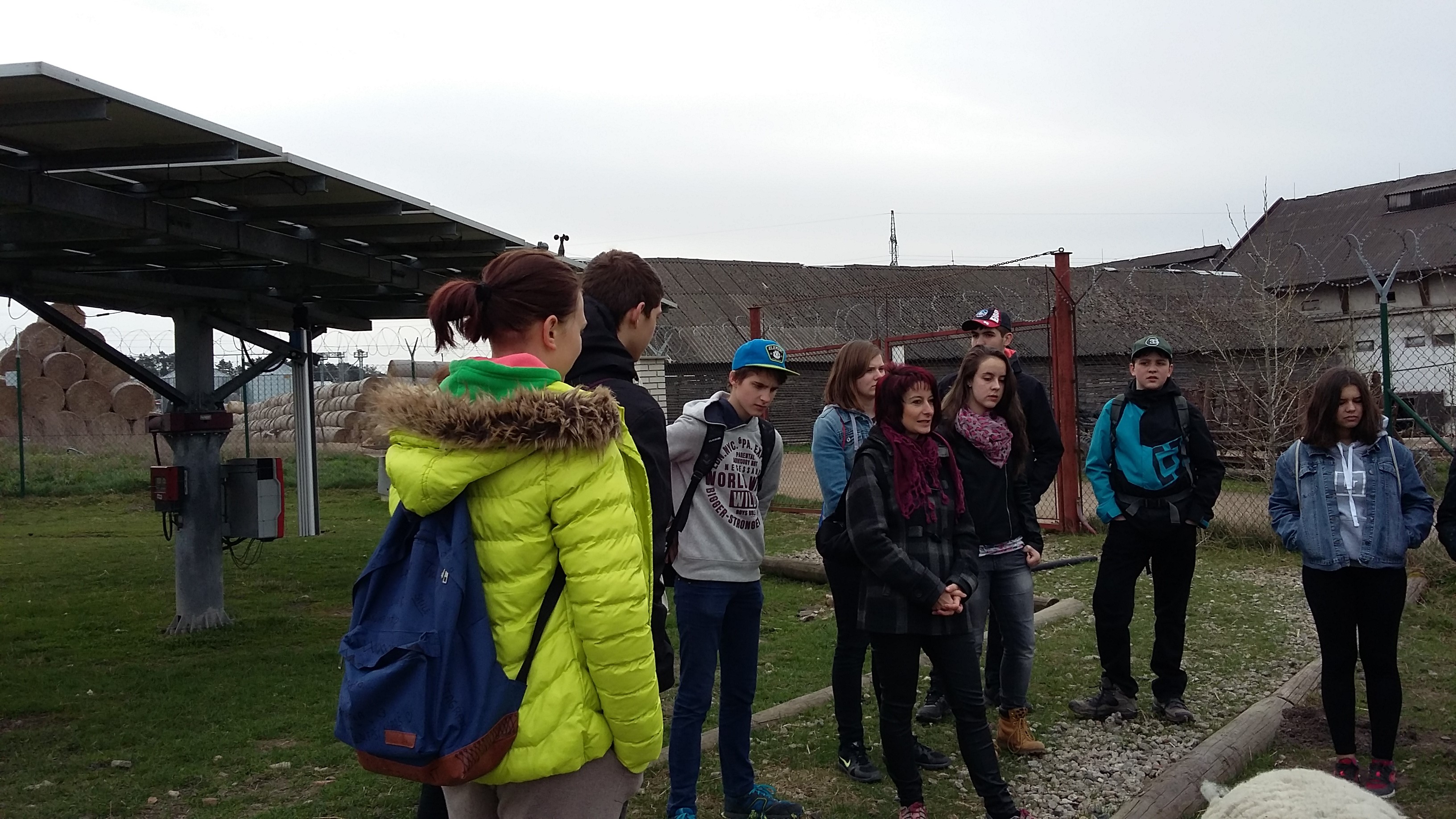
- Wind power Pchery, Czech Republic
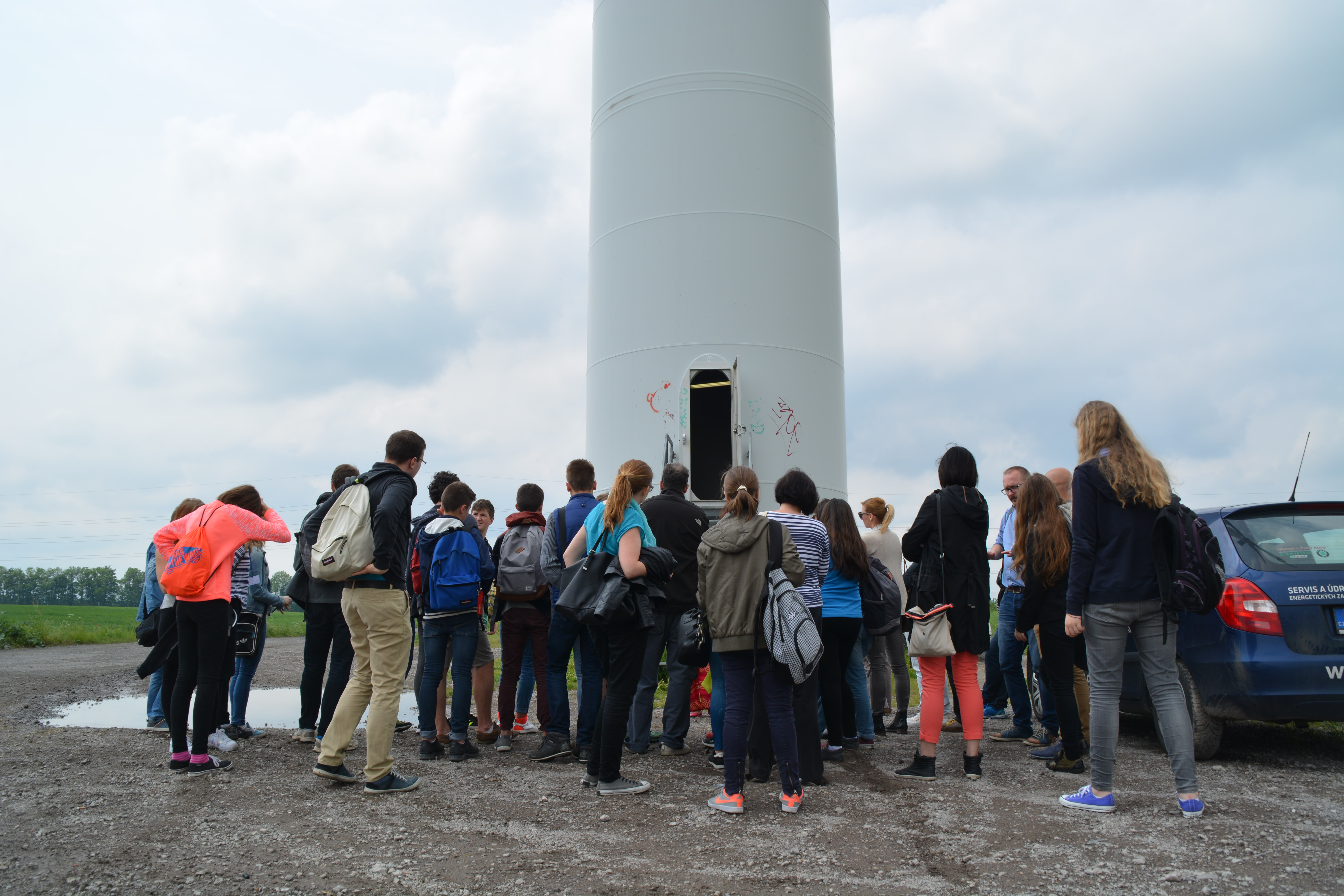
- Visit to LEGO factory in Kladno, Czech Republic
